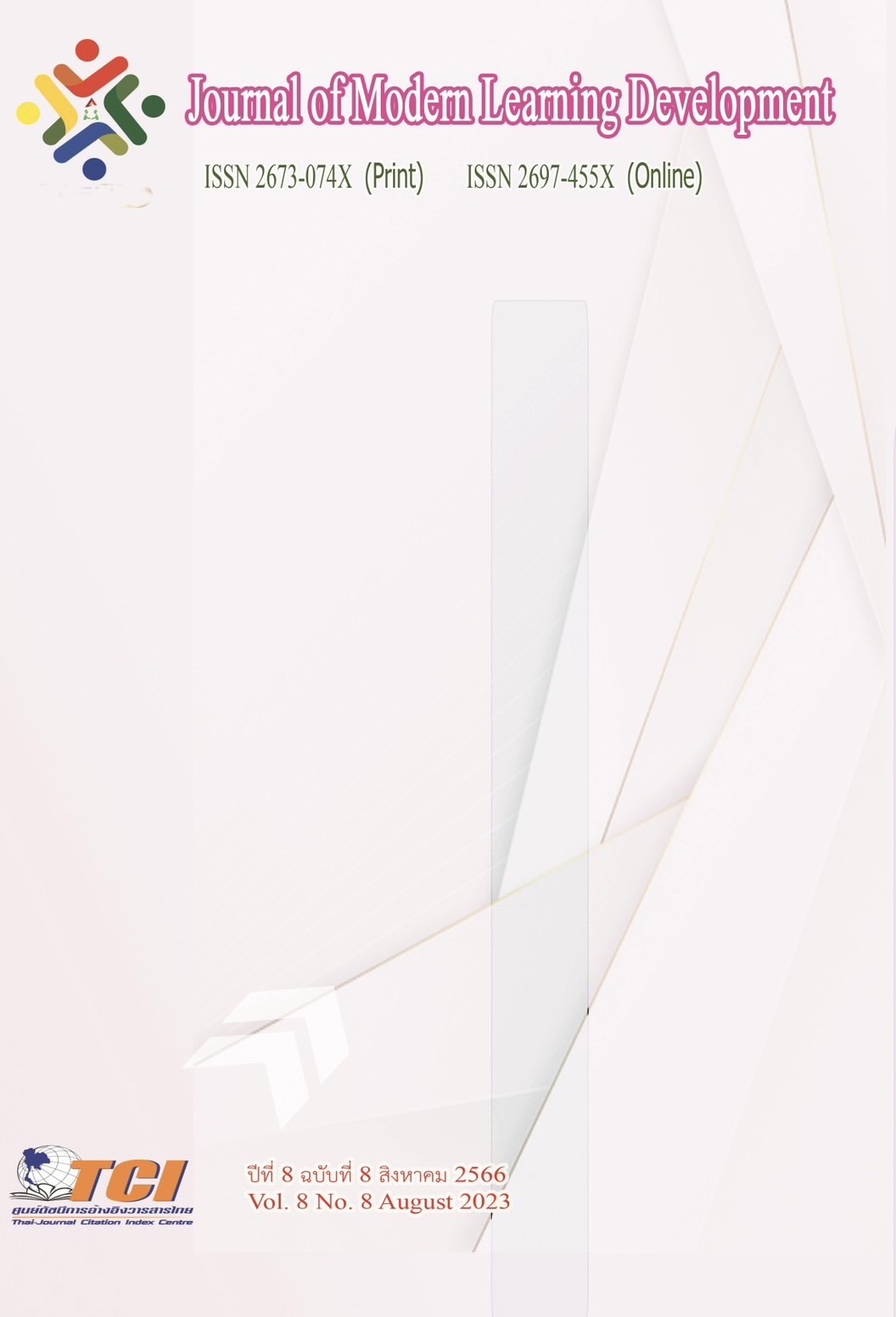Executives and Brahmawiharn Dharma in Administration
Main Article Content
Abstract
The Subline State of Mind and the administrators’ administration as the heads of mechanism for personnel leaders who take responsibility and support the effort for the others’ works. From this concept, it indicates that the administrators are personnel who assist the others to do their works in the time limitation in more increasing qualification and persons who are satisfied in effectiveness resulting from the new concepts of the administrators, that is, to assist and support more than the early administrative concepts that focus on the command and the control. Furthermore, in the new organizations, the administrators are limited to be the coordinators, instructors or team leaders. The administrators work related to personnel and every administrators especially, the principle of the Subline States of Mind consisting of the loving-kindness, compassion, sympathetic joy and equanimity. For respect and faith, the application of administrators’ the Subline States of Mind must be applied for the specific personnel in the organization. So the question must be set for the application of the administrators’ principle of the Subline States of Mind that for whom will the principle of the Subline States of Mind be applied? And is this principle necessary for the administrators’ application of the principle of the Subline States of Mind for the specific personnel in the organization or not? Or only personnel under the command must use the principle of the Four Subline States of Mind that can be included as follows: the administrators must have the Subline States of Mind, that is, the four principles of Dhamma for the adults. The loving-kindness will make the administrators look at the good aspects of colleagues. The compassion will make the administrators to be open-minded persons and to listen the others’ problems. The sympathetic joy will make the administrators support people to work and to have the occasion for increasing the position and the equanimity will make the administrators have the justice in giving reward and punishment for “general people.”
Article Details
References
ชินวรสิริวัฒน์ สมเด็จพระสังฆราชเจ้า กรมหลวง. (2541). พระคัมภีร์อภิธานัปปทีปิกา: หรือพจนานุกรมภาษาบาลีแปลเป็นภาษาไทย. (พิมพ์ครั้งที่ 5). กรุงเทพมหานคร: มหามกุฏราชวิทยาลัย.
ดาวรุ่ง สวัสดิรักษ์. (2556). ผู้บริหารกับการจัดการทรัพยากรบุคคลของสถานศึกษาระดับประถมศึกษาตามหลักพรหมวิหาร 4. วิทยานิพนธ์ปริญญาพุทธศาสตรมหาบัณฑิต สาขาการบริหารการศึกษา. บัณฑิตวิทยาลัย: มหาวิทยาลัยมหาจุฬาลงกรณราชวิทยาลัย.
บุญมี แท่นแกว้ . (2539). จริยศาสตร์. กรุงเทพมหานคร: โอเดียนสโตร์.
ปัญญานันทภิกขุ (ปั่น ปญฺญานนฺโท). (2541). หน้าที่ของคน ฉบับสมบูรณ์. กรุงเทพมหานคร: ธรรมสภา.
ปิ่น มุทุกันต์. (2514). แนวการสอนธรรมตามหลักสูตรนักธรรมชั้นตรี. กรุงเทพมหานคร: สํานักพิมพ์คลังวิทยา.
พจนานุกรม ฉบับราชบัณฑิตยสถาน. (2542). พจนานุกรม ฉบับราชบัณฑิตยสถาน พ.ศ. 2542.. กรุงเทพมหานคร: บริษัทนานมีบุ๊คส์พับลิเคชั่นส์ จํากัด .
พระครูนิวิฐธุราทร. (2552). พรหมวิหารธรรม. ออนไลน์. สืบค้นเมื่อวันที่ 25 กันยายน พ.ศ. 2558. แหล่งที่มา: https://www.gotoknow.org/posts/252165.
พระติสสทัตตเถระ. (2530). อภิธมฺมตฺสงฺคหปาลิยา สห อภิธมฺมตฺถวิภาวินี นาม อภิธมฺมตฺถสงฺคหฎีกา.กรุงเทพมหานคร: โรงพิมพ์มหามกุฏราชวิทยาลัย.
พระเทพโสภณ (ประยูร ธมฺมจิตฺโต ). (2539). ศาสตราจารย์พิเศษ เสถียรพงษ์ วรรณปก: มณีแห่งปัญญา.กรุงเทพมหานคร: ธรรมสภาและสถาบันบันลือธรรม.
พระธรรมกิตติวงศ์ (ทองดี สรุเตโช ). (2541). พระในบ้าน. กรุงเทพมหานคร: คาธาวรรณการพิมพ์.
พระธรรมปิฎก (ป.อ. ประยุตโต). (2542). พุทธธรรม เล่ม 3 บทที่ 11 – 15. (พิมพ์ครั้งที่ 8). กรุงเทพมหานคร: โรงพิมพ์มหาจุฬาลงกรณราชวิทยาลัย.
พระธรรมปิฎก (ป.อ. ประยุตโต ). (2540). ความสุขที่สมบูรณ์. (พิมพ์ครั้งที่ 2). กรุงเทพมหานคร: มูลนิธิพุทธธรรม.
พระธรรมปิฎก (ป. อ ปยุตต์ ปยุตฺโต). (2534). การศึกษากับการพัฒนาทรัพยากรมนุษย์. กรุงเทพมหานคร: โรงพิมพ์การศาสนา.
พระพรหมคุณาภรณ์ (ป.อ.ปยุตฺโต ). (2551). พจนานุกรมพุทธศาสตร์ ฉบับประมวลธรรม. (พิมพ์ครั้งที่ 16).กรุงเทพมหานคร: เอส.อาร์. พริ้นติ้ง แมส โปรดักส์ จํากัด.
พระมหาสุทธิชัย ฐิตชโย. (2546). ศึกษาเชิงวิเคราะห์พรหมวิหาร 4 ในคัมภีร์ทางพระพุทธศาสนา. วิทยานิพนธ์ปริญญาศาสนศาสตรมหาบัณฑติ สาขาพุทธศาสน์ศึกษา. บัณฑิตวิทยาลัย: มหาวิทยาลัยมหามกุฏราชวิทยาลัย.
มหาวิทยาลัยธรรมกาย แคลิฟอร์เนีย. (2550). สมถกัมมัฏฐาน 40 วิธี. กองวิชาการ มหาวิทยาลัยธรรมกายแคลิฟอร์เนีย.
สมเด็จพระญาณสังวร สมเด็จพระสังฆราช, (เจริญ สุวฑฺฒโน). (2543). รวมธรรมะ. กรุงเทพมหานครุ: บริษัท อมรินทร์พริ้นติ้งแอนด์พับลิชชิ่งมหาชน.
สมเด็จพระพุฒาจารย์, (อาจ อาสภมหาเถร). (2554). คัมภิร์วิสุทธิมรรค. (พิมพ์ครั้งที่ 10). กรุงเทพมหานคร: บริษัท ธนาเพรส จำกัด.
สัทธัมมโชติกะ ธัมมาจริยะ และ พระปรมัตถโชติกะ. (2540). มหาอภิธัมมัตถสังคหฎีกา ปริเฉทที่ 5 เล่ม 1 วิถีมุตตสังคหะ ภูมิจตุกะและปฏิสนธิจตุกกะ หลักสูตรชั้นมัชฌิมอาภิธรรมิกตรี. (พิมพ์ครั้งที่ 5). กรุงเทพมหานคร: โรงพิมพ์ทิพยวิสุทธิ์.
Henry Mintzberg. (1980). “Sructure in Fives, Management Science”. Online. Retrieved September 25, 2015. From: www.mintzberg.org/books .


